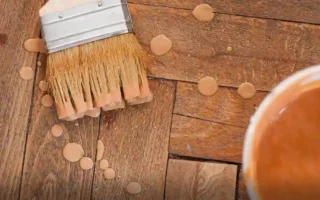Are you considering getting window tint for your car or home but wondering how long it will last? Window tint not only enhances the aesthetics of your windows but also provides practical benefits like UV protection and heat reduction. Here is the world of window tint to uncover its lifespan, factors influencing durability, signs that indicate replacement is needed, and tips on extending its longevity.
Understanding Window Tint
Window tint is a thin film applied to windows for various purposes, such as privacy, heat reduction, UV protection, and glare reduction. It comes in different shades and thickness levels to cater to individual preferences and needs. The tint is typically made of polyester material with layers of scratch-resistant coating for durability.
The installation process involves cleaning the window surface thoroughly before applying the tint using a unique adhesive. Professional installation ensures a smooth finish without air bubbles or wrinkles that can affect its effectiveness. Some tints are designed specifically for automotive use, while others are suitable for residential or commercial applications.
It’s essential to check local regulations regarding window tint darkness levels to ensure compliance with the law. Understanding the type of window tint you have installed will help you determine how long it is likely to last and when it may need replacement.
Factors that Affect the Longevity of Window Tint

When it comes to the longevity of your window tint, several factors come into play. The quality of the tint itself is a significant factor – higher quality tints are likely to last longer than cheaper alternatives.
Proper installation by experienced professionals can also impact how long your window tint will stay in good condition. A poor installation job may lead to bubbling or peeling over time.
Exposure to harsh sunlight and extreme weather conditions can affect the lifespan of your window tint as well. UV rays can cause fading and deterioration, while intense heat or cold can weaken the adhesive.
Regular maintenance and cleaning are essential for prolonging the life of your window tint. Avoid using abrasive cleaners that could damage the film, and opt for gentle cleaning methods instead.
By considering these factors and taking steps to care for your window tint properly, you can help ensure that it remains looking great and performing well for years to come.
The Average Lifespan of Window Tint
Several factors contribute to the average lifespan of window tint. The quality of the tint itself, the installation process, and how well you maintain it all contribute to its longevity.
On average, high-quality window tints can last anywhere from 5 to 10 years. However, cheaper tints may need replacement sooner due to fading or peeling.
Exposure to harsh sunlight can also impact the life of your tint. If your car sits in direct sunlight for extended periods, the tint may deteriorate faster than if it were parked in a garage or shaded area.
Regular maintenance, such as cleaning with mild soapy water and avoiding abrasive cleaners, can help extend the life of your window tint. Additionally, using a UV protectant spray can prevent fading and cracking over time.
Signs That Your Window Tint Needs to be Replaced
Have you noticed your window tint starting to bubble or peel off? These are clear signs that it may be time to consider replacing the tint. When sunlight exposure causes the adhesive holding the tint to weaken, bubbles and peeling can occur. Additionally, if you start to see discolouration or fading on the tint, this is another indicator of wear and tear.
When window tint becomes scratched or damaged, it needs to be replaced. Scratches not only affect the aesthetic appeal but also compromise the film’s functionality. If you notice any creases or wrinkles in the tint, it’s a good idea to have it replaced promptly.
Keep an eye out for any areas where the window film has lifted from the glass surface as well. This can happen over time due to various factors like age, improper installation, or extreme weather conditions. Please pay attention to these signs so you can address them before they worsen!
Tips for Maintaining and Extending the Lifespan of Window Tint
Ensuring the longevity of your window tint comes down to proper maintenance and care. By following these tips, you can extend the lifespan of your window tint and keep it looking great for years to come. Remember, regular cleaning, avoiding harsh chemicals, protecting it from sharp objects, and seeking professional help when needed are critical factors in maintaining your window tint. With these practices in place, you can enjoy all the benefits of window tinting while ensuring its durability. Stay proactive in caring for your window tint to make the most out of this valuable investment.




